Click on an image for detailed information
Click on a column heading to sort in ascending or descending order

My
List |
Addition Date
|
Target
|
Mission
|
Instrument
|
Size
|

|
1999-01-06 |
|
Hubble Space Telescope
|
WFPC2
|
1215x1241x3 |

|
-
PIA14443:
-
Looking Down a Barrel of Gas at a Doomed Star
Full Resolution:
TIFF
(4.525 MB)
JPEG
(65.37 kB)
|

|
2000-02-03 |
|
Hubble Space Telescope
|
WFPC2
|
2292x1480x3 |
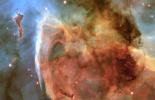
|
-
PIA14444:
-
Light and Shadow in the Carina Nebula
Full Resolution:
TIFF
(10.18 MB)
JPEG
(419.5 kB)
|

|
2014-09-19 |
|
Hubble Space Telescope
|
WFPC2
|
1280x686x3 |
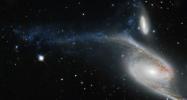
|
-
PIA17808:
-
Hubble Feathers the Peacock
Full Resolution:
TIFF
(2.635 MB)
JPEG
(101.2 kB)
|

|
2015-02-10 |
|
Hubble Space Telescope
|
WFPC2
|
758x748x3 |
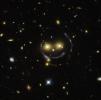
|
-
PIA18794:
-
Smile, and the Universe Smiles With You
Full Resolution:
TIFF
(1.702 MB)
JPEG
(37.58 kB)
|

|
2016-01-06 |
|
Hubble Space Telescope
|
WFPC2
|
738x726x3 |
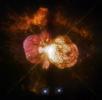
|
-
PIA20294:
-
WFPC2 Image of the Variable Star Eta Carinae
Full Resolution:
TIFF
(1.338 MB)
JPEG
(44.83 kB)
|

|
2016-01-21 |
|
Hubble Space Telescope
|
Advanced Camera for Surveys
|
3906x3906x3 |
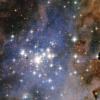
|
-
PIA20468:
-
Hubble Unveils a Tapestry of Dazzling Diamond-Like Stars
Full Resolution:
TIFF
(45.79 MB)
JPEG
(1.43 MB)
|

|
2016-02-18 |
|
Hubble Space Telescope
|
|
3600x4500x3 |

|
-
PIA16033:
-
Artist's View of a Super-Jupiter around a Brown Dwarf (2M1207)
Full Resolution:
TIFF
(8.77 MB)
JPEG
(420 kB)
|

|
2016-01-28 |
|
Hubble Space Telescope
|
|
1886x3000x3 |

|
-
PIA16024:
-
Monstrous Cloud Boomerangs Back to Our Galaxy (Artist's Concept)
Full Resolution:
TIFF
(9.49 MB)
JPEG
(601.9 kB)
|

|
2015-12-17 |
|
Hubble Space Telescope
|
|
1028x1218x3 |

|
-
PIA16022:
-
Hubble Sees the Force Awakening in a Newborn Star
Full Resolution:
TIFF
(3.517 MB)
JPEG
(85.05 kB)
|

|
2004-09-09 |
|
Hubble Space Telescope
|
Advanced Camera for Surveys
|
1417x1417x3 |
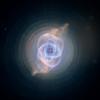
|
-
PIA16009:
-
Dying Star Creates Fantasy-like Sculpture of Gas and Dust
Full Resolution:
TIFF
(5.322 MB)
JPEG
(132.9 kB)
|

|
2010-04-22 |
|
Hubble Space Telescope
|
WFC3
|
2104x1937x3 |
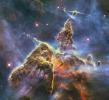
|
-
PIA15985:
-
Hubble Captures View of 'Mystic Mountain'
Full Resolution:
TIFF
(12.23 MB)
JPEG
(530.5 kB)
|

|
2016-06-08 |
|
Hubble Space Telescope
|
|
5120x2880x3 |
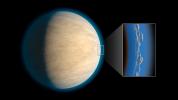
|
-
PIA20687:
-
Hot Jupiter with Hidden Water (Artist Concept)
Full Resolution:
TIFF
(17.9 MB)
JPEG
(389.4 kB)
|

|
2016-10-06 |
|
Hubble Space Telescope
|
|
3000x2701x3 |
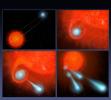
|
-
PIA21071:
-
Cannonballs' Shoot from Star (Artist Concept)
Full Resolution:
TIFF
(14.44 MB)
JPEG
(440 kB)
|

|
2017-05-25 |
|
Hubble Space Telescope
|
Hubble Space Telescope
|
1800x1200x3 |
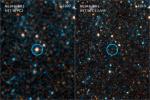
|
-
PIA21467:
-
Massive Star Goes Out With a Whimper Instead of a Bang
Full Resolution:
TIFF
(6.144 MB)
JPEG
(275.2 kB)
|

|
2018-01-11 |
|
Hubble Space Telescope
|
|
1000x750x3 |
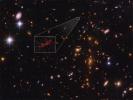
|
-
PIA22079:
-
NASA's Hubble Spots Embryonic Galaxy SPT0615-JD
Full Resolution:
TIFF
(2.083 MB)
JPEG
(107.9 kB)
|

|
2018-06-15 |
|
Hubble Space Telescope
|
|
4763x3126x3 |
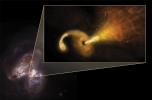
|
-
PIA22356:
-
A Tidal Disruption Event in Arp299B
Full Resolution:
TIFF
(24.23 MB)
JPEG
(946.7 kB)
|

|
2018-12-04 |
|
Hubble Space Telescope
|
WFC3
WFPC2
WFPC1
|
1881x627x3 |
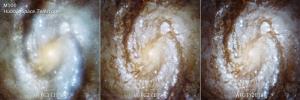
|
-
PIA22913:
-
M100 Through 3 Cameras
Full Resolution:
TIFF
(3.54 MB)
JPEG
(173 kB)
|

|
2018-12-10 |
|
Hubble Space Telescope
|
|
1074x895x3 |
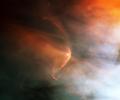
|
-
PIA22914:
-
Bow Shock Around Young Star
Full Resolution:
TIFF
(2.885 MB)
JPEG
(61.79 kB)
|

|
2020-01-08 |
|
Hubble Space Telescope
|
WFC3
|
1920x1280x3 |
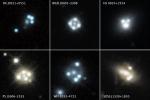
|
-
PIA23410:
-
Quasars' Multiple Images Shed Light on Tiny Dark Matter Clumps
Full Resolution:
TIFF
(3.504 MB)
JPEG
(114.3 kB)
|

|
2012-01-18 |
|
Herschel Space Observatory
XMM-Newton
|
PACS
SPIRE
XMM-Newton X-ray
|
1352x1353x3 |
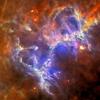
|
-
PIA15260:
-
Herschel Sees Through Ghostly Pillars
Full Resolution:
TIFF
(5.493 MB)
JPEG
(151 kB)
|

|
2012-11-14 |
|
Herschel Space Observatory
XMM-Newton
|
PACS
SPIRE
XMM-Newton X-ray
|
3234x2248x3 |
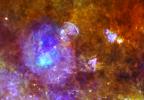
|
-
PIA16464:
-
Life and Death in a Star-Forming Cloud
Full Resolution:
TIFF
(21.82 MB)
JPEG
(446.7 kB)
|

|
2022-11-22 |
Orion Nebula
|
Herschel Space Observatory
Spitzer Space Telescope
Wide-field Infrared Survey Explorer (WISE)
|
Herschel Telescope
Spitzer Space Telescope
WISE Telescope
|
9036x7646x3 |
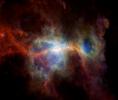
|
-
PIA25434:
-
Orion Nebula in Infrared
Full Resolution:
TIFF
(108.7 MB)
JPEG
(1.603 MB)
|

|
2011-08-01 |
|
Herschel Space Observatory
Spitzer Space Telescope
|
HIFI
IRAC
|
3000x2400x3 |
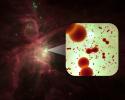
|
-
PIA14406:
-
Oxygen No Longer Lost in Space
Full Resolution:
TIFF
(21.6 MB)
JPEG
(276.5 kB)
|

|
2011-08-01 |
|
Herschel Space Observatory
Spitzer Space Telescope
|
HIFI
IRAC
|
3000x2400x3 |

|
-
PIA14407:
-
Oxygen in Orion
Full Resolution:
TIFF
(21.6 MB)
JPEG
(308.4 kB)
|

|
2012-01-10 |
|
Herschel Space Observatory
Spitzer Space Telescope
|
IRAC
SPIRE
PACS
|
15500x15500x3 |
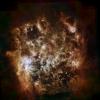
|
-
PIA15254:
-
Dusty Space Cloud
Full Resolution:
TIFF
(720.8 MB)
JPEG
(22.21 MB)
|

|
2012-01-10 |
|
Herschel Space Observatory
Spitzer Space Telescope
|
IRAC
SPIRE
PACS
|
10000x5000x3 |
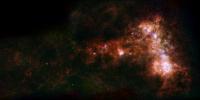
|
-
PIA15255:
-
A Dwarf Galaxy's Star Bar and Dusty Wing
Full Resolution:
TIFF
(150 MB)
JPEG
(6.56 MB)
|

|
2012-02-29 |
|
Herschel Space Observatory
Spitzer Space Telescope
|
Herschel Telescope
IRAC
|
2800x2880x3 |

|
-
PIA13959:
-
Orion's Rainbow of Infrared Light
Full Resolution:
TIFF
(24.19 MB)
JPEG
(321.2 kB)
|

|
2013-01-08 |
|
Herschel Space Observatory
Spitzer Space Telescope
|
|
4268x2400x3 |
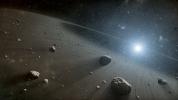
|
-
PIA16610:
-
Rocky Ring of Debris Around Vega (Artist Concept)
Full Resolution:
TIFF
(30.75 MB)
JPEG
(1.011 MB)
|

|
2013-12-12 |
|
Herschel Space Observatory
Hubble Space Telescope
|
PACS
WFPC2
|
3864x3864x3 |
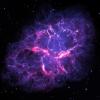
|
-
PIA17563:
-
Crab Nebula, as Seen by Herschel and Hubble
Full Resolution:
TIFF
(44.81 MB)
JPEG
(1.205 MB)
|

|
2014-04-29 |
|
Herschel Space Observatory
Hubble Space Telescope
|
HIFI
WFC3
|
1000x712x3 |
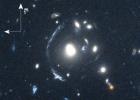
|
-
PIA18004:
-
Smeared and Magnified Galaxy
Full Resolution:
TIFF
(2.137 MB)
JPEG
(93.48 kB)
|

|
2009-10-02 |
|
Herschel Space Observatory
|
PACS
SPIRE
|
3403x3327x3 |
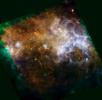
|
-
PIA12251:
-
Awash with Infrared Light
Full Resolution:
TIFF
(33.97 MB)
JPEG
(537.5 kB)
|

|
2009-10-02 |
|
Herschel Space Observatory
|
SPIRE
|
1266x1266x3 |
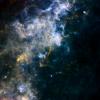
|
-
PIA12252:
-
Dark Wombs of Stars
Full Resolution:
TIFF
(4.814 MB)
JPEG
(115.8 kB)
|

|
2009-10-02 |
|
Herschel Space Observatory
|
SPIRE
|
3816x3689x3 |
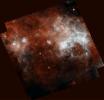
|
-
PIA12253:
-
Dark Star-Making Factory
Full Resolution:
TIFF
(42.23 MB)
JPEG
(526.4 kB)
|

|
2010-04-12 |
|
Herschel Space Observatory
|
PACS
SPIRE
|
783x598x3 |
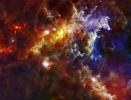
|
-
PIA13028:
-
Big Babies in the Rosette Nebula
Full Resolution:
TIFF
(1.407 MB)
JPEG
(56.69 kB)
|

|
2010-05-06 |
|
Herschel Space Observatory
|
PACS
SPIRE
|
2502x2560x3 |

|
-
PIA13100:
-
Assembly Line of Stars
Full Resolution:
TIFF
(19.24 MB)
JPEG
(524 kB)
|

|
2010-05-06 |
|
Herschel Space Observatory
|
PACS
SPIRE
|
2545x2906x3 |

|
-
PIA13101:
-
Bursting with Stars
Full Resolution:
TIFF
(22.21 MB)
JPEG
(417 kB)
|

|
2010-05-06 |
|
Herschel Space Observatory
|
PACS
SPIRE
|
2000x1997x3 |
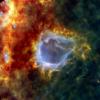
|
-
PIA13102:
-
Galactic Bubble
Full Resolution:
TIFF
(12 MB)
JPEG
(184.7 kB)
|

|
2010-05-11 |
|
Herschel Space Observatory
|
PACS
SPIRE
|
1315x1315x3 |
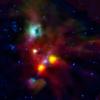
|
-
PIA13109:
-
Big Hole Revealed in Infrared
Full Resolution:
TIFF
(5.193 MB)
JPEG
(98.83 kB)
|

|
2010-09-01 |
|
Herschel Space Observatory
|
PACS
SPIRE
|
860x738x3 |
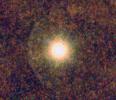
|
-
PIA13358:
-
Water Around a Carbon Star
Full Resolution:
TIFF
(1.906 MB)
JPEG
(96.61 kB)
|

|
2010-11-04 |
|
Herschel Space Observatory
|
Infrared Telescope
|
2868x1404x3 |
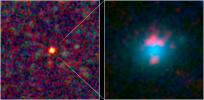
|
-
PIA13571:
-
Analyzing the Pieces of a Warped Galaxy
Full Resolution:
TIFF
(12.08 MB)
JPEG
(278.4 kB)
|

|
2011-01-05 |
|
Herschel Space Observatory
|
Infrared Telescope
|
3016x4106x3 |

|
-
PIA13771:
-
Andromeda is So Hot 'n' Cold
Full Resolution:
TIFF
(37.15 MB)
JPEG
(859.3 kB)
|

|
2011-02-17 |
|
Herschel Space Observatory
|
Infrared Telescope
|
2358x2358x3 |
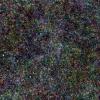
|
-
PIA13864:
-
Herschel's View of 'Lockman Hole'
Full Resolution:
TIFF
(16.7 MB)
JPEG
(1.012 MB)
|

|
2011-04-13 |
|
Herschel Space Observatory
|
Infrared Telescope
|
1735x1447x3 |
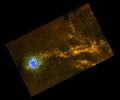
|
-
PIA14038:
-
Star-Studded Strings around Cocoon Nebula
Full Resolution:
TIFF
(7.543 MB)
JPEG
(112 kB)
|

|
2011-07-19 |
|
Herschel Space Observatory
|
PACS
SPIRE
|
2500x2500x3 |
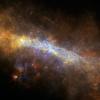
|
-
PIA14400:
-
The Case of the Warped Galactic Ring
Full Resolution:
TIFF
(18.77 MB)
JPEG
(251.5 kB)
|

|
2011-10-20 |
|
Herschel Space Observatory
|
|
3000x2400x3 |
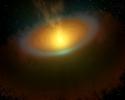
|
-
PIA14870:
-
Misty Star in the Sea Serpent (Artist's Concept)
Full Resolution:
TIFF
(21.6 MB)
JPEG
(258.7 kB)
|

|
2012-04-04 |
|
Herschel Space Observatory
|
PACS
SPIRE
|
934x956x3 |

|
-
PIA15421:
-
The Action-Packed Centaurus A
Full Resolution:
TIFF
(2.683 MB)
JPEG
(24.94 kB)
|

|
2012-04-04 |
|
Herschel Space Observatory
|
PACS
SPIRE
XMM-Newton
|
934x956x3 |

|
-
PIA15422:
-
Centaurus A All Prettied Up in Infrared and X-Rays
Full Resolution:
TIFF
(2.683 MB)
JPEG
(38.6 kB)
|

|
2012-04-12 |
|
Herschel Space Observatory
|
|
2360x2359x3 |
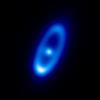
|
-
PIA15425:
-
Herschel Spots Comet Massacre Around Nearby Star
Full Resolution:
TIFF
(16.72 MB)
JPEG
(114.8 kB)
|

|
2012-05-11 |
Cygnus-X
|
Herschel Space Observatory
|
PACS
SPIRE
|
5897x2151x3 |
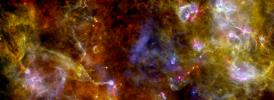
|
-
PIA15626:
-
Cygnus-X: The Cool Swan Glowing in Flight
Full Resolution:
TIFF
(38.05 MB)
JPEG
(963.3 kB)
|

|
2012-05-09 |
|
Herschel Space Observatory
|
|
4500x3600x3 |
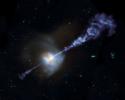
|
-
PIA15625:
-
Artist's Concept: Active Black Hole Squashes Star Formation
Full Resolution:
TIFF
(48.6 MB)
JPEG
(1.935 MB)
|

|
2012-05-17 |
|
Herschel Space Observatory
|
SPIRE
|
6898x3880x3 |
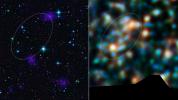
|
-
PIA15659:
-
A Star-Bursting Filament
Full Resolution:
TIFF
(80.29 MB)
JPEG
(2.074 MB)
|

|
2012-11-28 |
|
Herschel Space Observatory
|
Herschel Telescope
|
1000x699x3 |
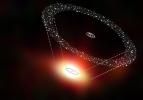
|
-
PIA16467:
-
A Vast Disk of Comets (Artist's Concept)
Full Resolution:
TIFF
(2.098 MB)
JPEG
(45.26 kB)
|

|
2013-01-09 |
|
Herschel Space Observatory
|
PACS
|
826x485x3 |
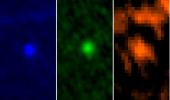
|
-
PIA16675:
-
Herschel's Three-Color View of Asteroid Apophis
Full Resolution:
TIFF
(1.202 MB)
JPEG
(25.73 kB)
|

|
2013-01-22 |
|
Herschel Space Observatory
|
PACS
|
625x643x3 |

|
-
PIA16680:
-
Betelgeuse's Enigmatic Environment
Full Resolution:
TIFF
(1.206 MB)
JPEG
(35.67 kB)
|

|
2013-01-28 |
M31
|
Herschel Space Observatory
|
SPIRE
|
2800x1575x3 |
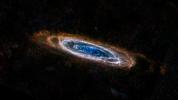
|
-
PIA16681:
-
Andromeda's Colorful Rings
Full Resolution:
TIFF
(13.24 MB)
JPEG
(368 kB)
|

|
2013-01-28 |
M31
|
Herschel Space Observatory
|
PACS
SPIRE
|
2711x2920x3 |

|
-
PIA16682:
-
Cool Andromeda
Full Resolution:
TIFF
(23.76 MB)
JPEG
(510 kB)
|

|
2013-05-07 |
|
Herschel Space Observatory
|
|
4096x2048x3 |
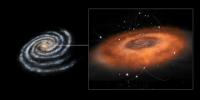
|
-
PIA17009:
-
Hustle and Bustle at Center of Milky Way
Full Resolution:
TIFF
(25.17 MB)
JPEG
(500.7 kB)
|

|
2013-03-05 |
Rosette Nebula
|
Herschel Space Observatory
|
PACS
SPIRE
|
4207x3822x3 |
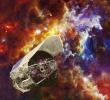
|
-
PIA16871:
-
Herschel's Cool Universe (Artist's Concept)
Full Resolution:
TIFF
(48.27 MB)
JPEG
(1.26 MB)
|

|
2013-03-19 |
|
Herschel Space Observatory
|
Herschel Telescope
|
3100x2260x3 |
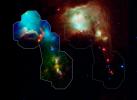
|
-
PIA16839:
-
Infant Stars Peek Out from Dusty Cradles
Full Resolution:
TIFF
(21.03 MB)
JPEG
(339.9 kB)
|

|
2013-03-29 |
|
Herschel Space Observatory
|
PACS
SPIRE
|
1500x1434x3 |

|
-
PIA16883:
-
Churning Out Stars
Full Resolution:
TIFF
(6.456 MB)
JPEG
(182.4 kB)
|

|
2013-04-17 |
|
Herschel Space Observatory
|
|
1280x1280x3 |
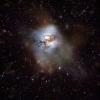
|
-
PIA16887:
-
Artist's Impression of Starburst Galaxy
Full Resolution:
TIFF
(4.917 MB)
JPEG
(211.9 kB)
|

|
2013-05-22 |
|
Herschel Space Observatory
|
|
1278x719x3 |
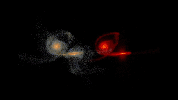
|
-
PIA17012:
-
Mega Galaxy Merger

Full Resolution:
TIFF
(2.758 MB)
JPEG
(43.5 kB)
|

|
2013-05-22 |
|
Herschel Space Observatory
|
|
2400x1500x3 |
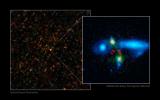
|
-
PIA17013:
-
The Making of a Giant Galaxy
Full Resolution:
TIFF
(10.8 MB)
JPEG
(211.3 kB)
|

|
2013-06-11 |
|
Herschel Space Observatory
|
|
4000x2250x3 |
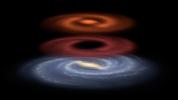
|
-
PIA17243:
-
Mapping Invisible Pools of Gas in Our Galaxy (Illustration)
Full Resolution:
TIFF
(27.01 MB)
JPEG
(379.7 kB)
|

|
2014-06-12 |
NGC 7538
|
Herschel Space Observatory
|
PACS
SPIRE
|
2305x1540x3 |
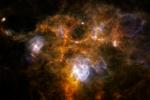
|
-
PIA18452:
-
A Puzzling Cosmic Ring
Full Resolution:
TIFF
(10.65 MB)
JPEG
(170.6 kB)
|

|
2014-10-15 |
|
Herschel Space Observatory
|
|
1560x1560x3 |
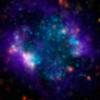
|
-
PIA18846:
-
Sluggish Galaxy Grows Stars Slowly
Full Resolution:
TIFF
(7.304 MB)
JPEG
(90.61 kB)
|

|
2015-05-28 |
|
Herschel Space Observatory
|
PACS
SPIRE
|
1323x1046x3 |
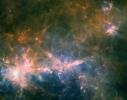
|
-
PIA19340:
-
Herschel's View of G49 Filament
Full Resolution:
TIFF
(4.153 MB)
JPEG
(95.89 kB)
|

|
2016-05-27 |
|
Herschel Space Observatory
|
PACS
SPIRE
|
2112x1452x3 |
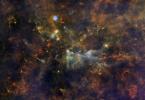
|
-
PIA13500:
-
The Little Fox and the Giant Stars
Full Resolution:
TIFF
(9.204 MB)
JPEG
(393.2 kB)
|

|
2016-10-12 |
Orion
|
Herschel Space Observatory
|
PACS
SPIRE
HIFI
|
5200x7400x3 |

|
-
PIA21073:
-
Ionized Carbon Atoms in Orion
Full Resolution:
TIFF
(80.59 MB)
JPEG
(1.376 MB)
|

|
2022-06-16 |
|
Herschel Space Observatory
|
|
13000x13000x3 |
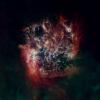
|
-
PIA25162:
-
Large Magellanic Cloud Imaged by Herschel, Planck, IRAS, COBE
Full Resolution:
TIFF
(291.7 MB)
JPEG
(6.089 MB)
|

|
2022-06-16 |
|
Herschel Space Observatory
|
|
7400x4162x3 |
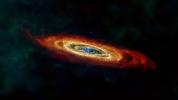
|
-
PIA25163:
-
Andromeda Galaxy Imaged by Herschel, Planck, IRAS, COBE
Full Resolution:
TIFF
(40.82 MB)
JPEG
(1.118 MB)
|

|
2022-06-16 |
|
Herschel Space Observatory
|
|
4950x4950x3 |
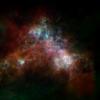
|
-
PIA25164:
-
Small Magellanic Cloud Imaged by Herschel, Planck, IRAS, COBE
Full Resolution:
TIFF
(54.26 MB)
JPEG
(1.546 MB)
|

|
2022-06-16 |
|
Herschel Space Observatory
|
|
2401x1350x3 |
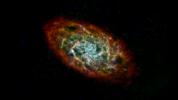
|
-
PIA25165:
-
Triangulum Galaxy Imaged by Herschel, Planck, IRAS, COBE
Full Resolution:
TIFF
(3.554 MB)
JPEG
(124.8 kB)
|

|
2013-10-31 |
|
Galaxy Evolution Explorer (GALEX)
Wide-field Infrared Survey Explorer (WISE)
|
GALEX Telescope
WISE Telescope
|
1302x818x3 |
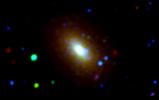
|
-
PIA17554:
-
Galaxies Grow from Inside Out
Full Resolution:
TIFF
(3.196 MB)
JPEG
(33.78 kB)
|

|
2006-09-28 |
|
Galaxy Evolution Explorer (GALEX)
Spitzer Space Telescope
|
MIPS
Ultraviolet/Visible Camera
|
7430x2410x3 |

|
-
PIA08787:
-
Amazing Andromeda Galaxy
Full Resolution:
TIFF
(53.72 MB)
JPEG
(3.426 MB)
|

|
2007-01-16 |
|
Galaxy Evolution Explorer (GALEX)
Spitzer Space Telescope
|
IRAC
|
975x700x3 |
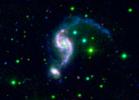
|
-
PIA09106:
-
Older Galaxy Pair Has Surprisingly Youthful Glow
Full Resolution:
TIFF
(2.051 MB)
JPEG
(55.51 kB)
|

|
2007-12-13 |
M51
|
Galaxy Evolution Explorer (GALEX)
Spitzer Space Telescope
|
IRAC
Ultraviolet/Visible Camera
|
1978x2850x3 |

|
-
PIA10200:
-
A Classic Beauty
Full Resolution:
TIFF
(16.93 MB)
JPEG
(526.5 kB)
|

|
2009-04-28 |
M33
|
Galaxy Evolution Explorer (GALEX)
Spitzer Space Telescope
|
Ultraviolet/Visible Camera
|
2228x3462x3 |

|
-
PIA11998:
-
NASA's Galaxy Mission Celebrates Sixth Anniversary
Full Resolution:
TIFF
(23.17 MB)
JPEG
(811.1 kB)
|

|
2009-04-28 |
M33
|
Galaxy Evolution Explorer (GALEX)
Spitzer Space Telescope
|
Ultraviolet/Visible Camera
|
2228x3462x3 |

|
-
PIA11999:
-
NASA's Galaxy Mission Celebrates Sixth Anniversary
Full Resolution:
TIFF
(23.17 MB)
JPEG
(1.039 MB)
|

|
2009-04-28 |
M33
|
Galaxy Evolution Explorer (GALEX)
Spitzer Space Telescope
|
Ultraviolet/Visible Camera
|
4402x4402x3 |
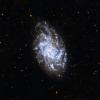
|
-
PIA12000:
-
NASA's Galaxy Mission Celebrates Sixth Anniversary
Full Resolution:
TIFF
(58.13 MB)
JPEG
(1.866 MB)
|

|
2011-05-25 |
|
Galaxy Evolution Explorer (GALEX)
Spitzer Space Telescope
|
IRAC
Ultraviolet/Visible Camera
|
2853x1903x3 |
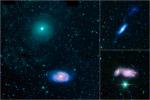
|
-
PIA14097:
-
Galactic Train Wrecks
Full Resolution:
TIFF
(16.29 MB)
JPEG
(537.9 kB)
|

|
2012-04-03 |
|
Galaxy Evolution Explorer (GALEX)
Spitzer Space Telescope
|
IRAC
Ultraviolet/Visible Camera
|
1130x1130x3 |
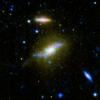
|
-
PIA15419:
-
The Beginning of the End of Star Formation
Full Resolution:
TIFF
(3.835 MB)
JPEG
(129 kB)
|

|
2012-10-03 |
|
Galaxy Evolution Explorer (GALEX)
Spitzer Space Telescope
|
IRAC
Ultraviolet/Visible Camera
|
6019x6019x3 |
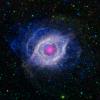
|
-
PIA15817:
-
The Helix Nebula: Unraveling at the Seams
Full Resolution:
TIFF
(108.7 MB)
JPEG
(3.087 MB)
|

|
2016-01-05 |
|
Galaxy Evolution Explorer (GALEX)
NuSTAR
|
GALEX Telescope
NuSTAR
|
6289x3538x3 |
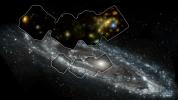
|
-
PIA20061:
-
Andromeda in High-Energy X-rays
Full Resolution:
TIFF
(41.67 MB)
JPEG
(2.214 MB)
|

|
2017-03-23 |
|
Galaxy Evolution Explorer (GALEX)
NuSTAR
|
GALEX Telescope
NuSTAR
|
2048x1152x3 |
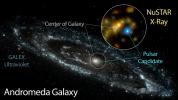
|
-
PIA20970:
-
Pulsar Candidate in Andromeda
Full Resolution:
TIFF
(3.973 MB)
JPEG
(291.9 kB)
|

|
2006-01-11 |
Cartwheel Galaxy
|
Galaxy Evolution Explorer (GALEX)
Hubble Space Telescope
Spitzer Space Telescope
|
Chandra X-ray Telescope
GALEX Telescope
Infrared Array Camera (IRAC)
Visible Light
|
1500x1500x3 |
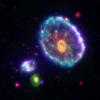
|
-
PIA03296:
-
A Stellar Ripple
Full Resolution:
TIFF
(6.762 MB)
JPEG
(201.2 kB)
|

|
2007-06-01 |
Messier 81
|
Galaxy Evolution Explorer (GALEX)
Hubble Space Telescope
Spitzer Space Telescope
|
GALEX Telescope
Infrared Array Camera (IRAC)
Visible Light
|
3180x2456x3 |

|
-
PIA09579:
-
M81 Galaxy is Pretty in Pink
Full Resolution:
TIFF
(23.43 MB)
JPEG
(1.061 MB)
|

|
2010-08-11 |
|
Galaxy Evolution Explorer (GALEX)
Hubble Space Telescope
|
Ultraviolet/Visible Camera
|
2400x1600x3 |
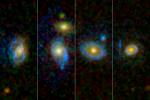
|
-
PIA13318:
-
Ultraviolet Ring Around the Galaxies
Full Resolution:
TIFF
(11.53 MB)
JPEG
(192.2 kB)
|

|
2003-05-28 |
|
Galaxy Evolution Explorer (GALEX)
|
GALEX Telescope
|
534x528x3 |
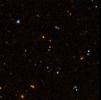
|
-
PIA04278:
-
GALEX 1st Light Near Ultraviolet -50
Full Resolution:
TIFF
(540.4 kB)
JPEG
(33.53 kB)
|

|
2003-05-28 |
|
Galaxy Evolution Explorer (GALEX)
|
GALEX Telescope
|
1450x1550x3 |

|
-
PIA04279:
-
GALEX 1st Light Near Ultraviolet
Full Resolution:
TIFF
(2.538 MB)
JPEG
(173.2 kB)
|

|
2003-05-28 |
|
Galaxy Evolution Explorer (GALEX)
|
GALEX Telescope
|
1450x1555x3 |

|
-
PIA04280:
-
GALEX 1st Light Far Ultraviolet
Full Resolution:
TIFF
(1.453 MB)
JPEG
(93.59 kB)
|

|
2003-05-28 |
|
Galaxy Evolution Explorer (GALEX)
|
GALEX Telescope
|
534x528x3 |
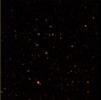
|
-
PIA04281:
-
GALEX 1st Light Near and Far Ultraviolet -100
Full Resolution:
TIFF
(390.4 kB)
JPEG
(22.84 kB)
|

|
2003-05-28 |
|
Galaxy Evolution Explorer (GALEX)
|
GALEX Telescope
|
2112x1533x3 |
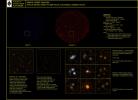
|
-
PIA04282:
-
GALEX 1st Light Compilation
Full Resolution:
TIFF
(2.837 MB)
JPEG
(340.9 kB)
|

|
2003-07-25 |
|
Galaxy Evolution Explorer (GALEX)
|
GALEX Telescope
|
989x1010x3 |

|
-
PIA04623:
-
Galaxy UGC10445
Full Resolution:
TIFF
(1.436 MB)
JPEG
(48.59 kB)
|

|
2003-07-25 |
|
Galaxy Evolution Explorer (GALEX)
|
GALEX Telescope
|
1600x1496x3 |
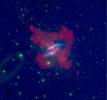
|
-
PIA04624:
-
Galaxy Centaurus A
Full Resolution:
TIFF
(7.193 MB)
JPEG
(235.1 kB)
|

|
2003-07-25 |
|
Galaxy Evolution Explorer (GALEX)
|
GALEX Telescope
|
795x735x3 |
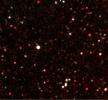
|
-
PIA04625:
-
Groth Deep Image
Full Resolution:
TIFF
(1.143 MB)
JPEG
(66.32 kB)
|

|
2003-07-25 |
|
Galaxy Evolution Explorer (GALEX)
|
GALEX Telescope
|
796x733x3 |
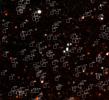
|
-
PIA04626:
-
Groth Deep Locations Image
Full Resolution:
TIFF
(1.188 MB)
JPEG
(93.39 kB)
|

|
2003-07-25 |
|
Galaxy Evolution Explorer (GALEX)
|
GALEX Telescope
|
770x644x3 |
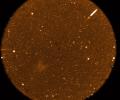
|
-
PIA04627:
-
Deep Imaging Survey
Full Resolution:
TIFF
(1.282 MB)
JPEG
(112.4 kB)
|

|
2003-07-25 |
|
Galaxy Evolution Explorer (GALEX)
|
GALEX Telescope
|
996x1003x3 |

|
-
PIA04628:
-
Galaxy Messier 51
Full Resolution:
TIFF
(1.012 MB)
JPEG
(36.55 kB)
|

|
2003-07-25 |
|
Galaxy Evolution Explorer (GALEX)
|
GALEX Telescope
|
1008x992x3 |
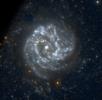
|
-
PIA04629:
-
Galaxy Messier 83
Full Resolution:
TIFF
(2.944 MB)
JPEG
(194.6 kB)
|